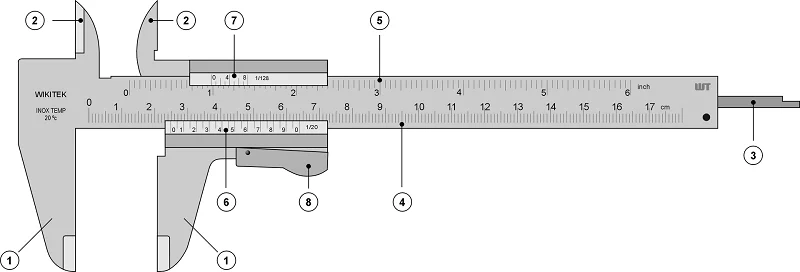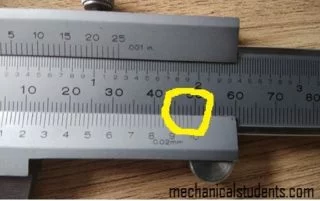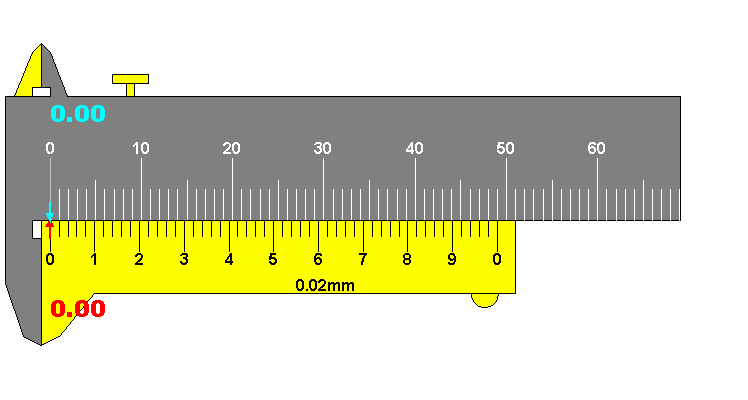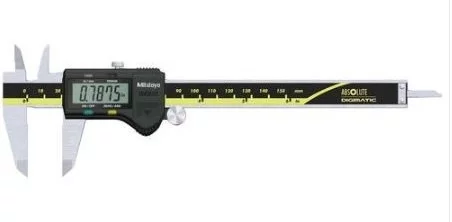How to Feed Back an Over Extended Caliper
Vernier Caliper is used to measure the dimensions of the given specimen like diameter (Outer Dia and Inner dia), length and depth, etc very accurately that's the reason it is also called as Precision measuring Instrument. In the last class, we had discussed the concepts on Angular Measurements & Linear Measurements and in today's paper, we will discuss Vernier Caliper in detail. It was invented by French mathematician Pierre Vernier in 1631. They usually show either metric or imperial measurements and in some of the cases, it measures both. A Vernier Caliper has following parts: The Vernier Caliper is a Precision Measuring Instrument which is used to measure length, depth, diameter of the given specimen. The detailed explanation of Vernier Caliper is as follows. The measuring depth probe is used to measure the depth of the given specimen. The formula of Vernier calipers was shown below. Measurement= M.S.R + (V.S.R*L.C) The least count was calculated as follows. Least Count (L.C)= 1 MSD - 1VSD By knowing the readings of Main Scale Divisons, Vernier Scale Divisons and Least Count, the reading of a specimen can be found and it can be theoretically calculated as follows. If the zeroth division of the vernier scale is coincided with (some number) on the Main scale(consider it as 10) then 10mm is the Main scale Reading(M.S.R). M.S.R = 10mm. After that, you need to check which division on the vernier is exactly coinciding with the main scale as shown in the fig. Therefore,upto (0-10),it is 50 divisons.So,take the Vernier Scale Divison is 50. V.S.R=50. As we know the formula of Least Count (L.C)= 1 MSD - 1VSD 1 VSD= (49/50) MSD= 0.98 MSD Substitute the above value in the formula of Least Count (L.C)= 1 MSD - 1VSD Therefore, Least Count (L.C) =1 MSD - 0.98 MSD= 0.02 mm Therefore, the Least Count of Vernier Caliper is 0.02 mm. Measurement= M.S.R + (V.S.R*L.C) = 10+ (50*0.02) = 10+1 = 11mm Therefore, the reading on Vernier Caliper is 11 mm. The range of a vernier caliper is the difference between the largest value and the smallest value that a caliper can measure and It is equivalent to the length of the main scale. Mostly, vernier calipers have a range of 6 inches i.e. 300mm. A Caliper's resolution is indicated at the end of the vernier scale and it is the smallest distance that the caliper can measure. The resolution of Vernier Caliper are: In almost all industries people were using the vernier caliper, not of dial mode and thereby there is a little chance(in terms of microns) that they will get an error. The basic difference between the standard vernier and the Dial Vernier is as follows. Dial Caliper or Digital Vernier: Direct Reading (Perfect Reading) will be displayed. Standard Vernier: Manual Reading (You need to check manually). An Instrument error refers to how accurate a vernier caliper is. Low tolerance measuring tools provide very accurate results with a small margin for error and Vernier calipers is one of them. Some of the applications of vernier calipers are listed below: They provide precise and accurate measurements over a large range. It can have the ability to measure any type of dimensions of a component, for example: As the Vernier is made up of Stainless steel(Anti-Corrosive material), it can sustain for a long period of time and thereby its durability will be high. It is relatively less expensive compared to other calipers. If you want the accuracy, you should have to leave the rulers or measuring tapes for the measurement of any component. It needs much concentration to read a dimension of the component else there is a possibility of error. If you are unable to use vernier calipers, then you can go for the other accurate tools present in the industry like Dial Caliper. Good Magnifying glass is required during taking the measurement of any component if your eyesight is not proper else it results in taking the errors as the original measurement. This is the detailed explanation of Vernier Caliper along with its Formula, Construction, Experiment. If you like this article, Then share it with all your friends. READ MORE FROM US The Invention of Vernier Caliper:
Parts of Vernier Caliper:

Working Principle of Vernier Caliper:
How to Measure the Depth of the given specimen?
How can you check any Measurement?
Formula of Vernier Caliper:
Least Count of Vernier Caliper:
How to Read Vernier Caliper in mm?
Calculation of Main Scale Division:
Calculation of Vernier Scale Division:

Calculation of Least Count:

Here is a Video on How You Can Measure on Vernier Caliper:
Range of Vernier Caliper:
Resolution of Vernier Caliper:
What is the difference between a dial caliper and a Vernier caliper?

Instrument error or Tolerance:
Applications of Vernier Caliper:
Advantages of Vernier Caliper:
Accuracy and Precision:
Versatility:
Durability:
Cost:
Ruler or Measuring Tapes:
Disadvantages of Vernier Caliper:
Possibility of Errors:
Accurate Tools:
Magnifying Glass or Eyesight:
3 Types of Marking Out Tools used in Fitting – Engineering Workshop References [External Links]:
Media Credits:
How to Feed Back an Over Extended Caliper
Source: https://mechanicalenotes.com/vernier-caliper/
0 Response to "How to Feed Back an Over Extended Caliper"
Post a Comment